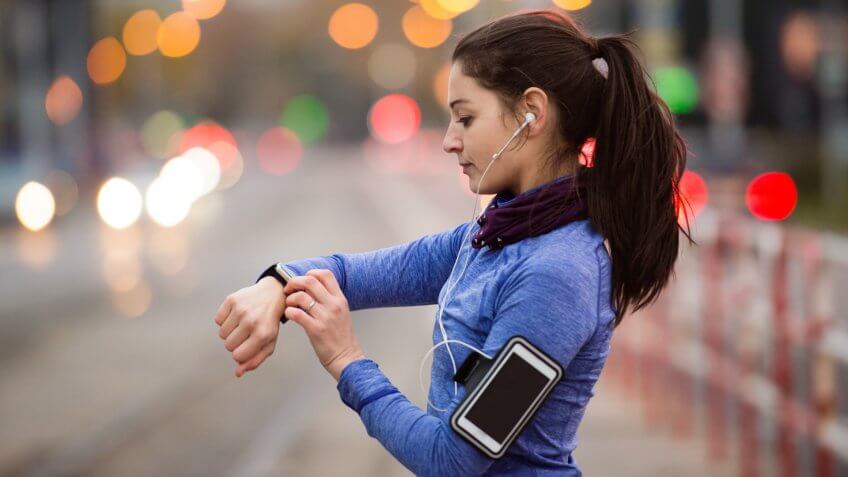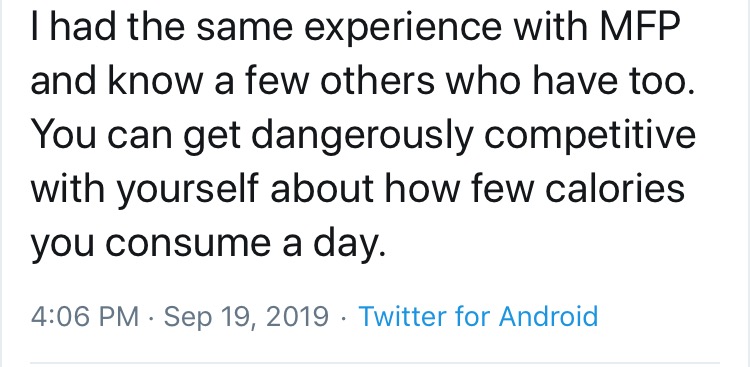MyFitnessPal or MyFitness-Prosecutor?

We have all been there on New Years Day, thinking about our new years resolutions and the first one that most people think about is “get more active” or “lose some of the Christmas weight”. The health and wellness industry globally is now worth approximately $4.2 trillion and it is only growing, thanks to apps like MyFitnessPal. MyFitnessPal give their users ultimate control over how to change their lifestyle for the ‘better’ without spending the money on personal trainers and diet schemes.
But, although these apps are designed to get us off the couch and on the road to a healthier and more active life style, what are the implications of using MyFitnessPal, and is it as motivating as first thought?
MyFitnessPal describes itself as “a smartphone app and website that tracks diet and exercise to determine optimal caloric intake and nutrients for the users’ goals and uses gamification elements to motivate users.” But are these gamification elements having a negative effect on the way that people see themselves and their body?
Before focusing on the way the app works, it is important to pay attention to the interface of the app to truly understand how the user is first engaging with MyFitnessPal, and what might lead users to continue to use the app for their health and fitness targets.
The initial interface of MyFitnessPal is that it is overwhelmed with numbers. The app is similar to an excel spread sheet when it comes to the ‘food diary’ part of the app. The ‘food diary’ calculates how much you’ve eaten and how many more calories you are ‘allowed’ to have for the rest of the day, if you want to achieve your weight goal. The app prompts you to put your height, weight and how much exercise you do in when you sign up, and also asks you how much weight you would like to lose a week. From that, it predicts how many calories you should be ingesting a day. Once you have completed your food diary for the day, it gives you a summary (example below) as a motivational boost to keep using the app, however, MyFitnessPal may say that they send these motivational messages to boost the morale of the user.

By using a numerical fuelled interface, the app gives off the impression that it is ‘scientifically’ correct and that the information that they provide is accurate and will help the user achieve their goal weight. Paired with the primary colour scheme made up of blue and white with black text, the app has a professional quality, which suggests to users that the information provided is honest and trustworthy. The interface of MyFitnessPal assures first time users of the app that they will be able to achieve their goals with the help of MyFitnessPal, rather than on their own accord.
Interface aside; it is important to look at the app from a psychological point of view. According to the self-determination theory, we as humans have three pillars of motivations: mastery, autonomy and relatedness. With these motivators in mind, you can see how MyFitnessPal has targeted users in order to keep them engaged.
By having a sharing platform on the app, you can connect with likeminded people who are also striving to lose weight and keep up with various exercise targets. It also encourages users to be slightly competitive, keeping up to date with other people’s weight loss and exercise regimes fuels a comparative nature towards ourselves and also makes the app more social, therefore ticking the box of the ‘relatedness’ motivation. By comparing your data to other users, it can lead the user to become more ruthless on their own exercise and diet regime, which also ticks the ‘mastery’ motivation.
Burcher, in their paper ‘The Friendship Assemblage’ which focuses on user’s relationship with Facebook mentions ‘the subtle ways in which the software behaves thus pushes, reminds and introduces users to one another’ (Bucher, 486) this can also be also associated with MyFitnessPal. The fact that you can connect and follow many people who are striving for the same fitness and health aspirations as yourself, may allow you to keep motivated. However by making it slightly competitive, users could become more obsessed, putting pressure on themselves for not achieving the same calories losses as their fellow users. This is a clear sign of one of the ‘gamification’ techniques that the MyFitnessPal mentions in their description of their app.
MyFitnessPal also uses push notifications or reminders as a way to engage users by ‘guilt tripping’ them to use the app to track their calorie intake or to update their exercise routine, therefore enforcing the ‘autonomy’ element of the self-determination theory. By using tools such as push notifications, it constantly reminds the user that there is goal to be reached, and therefore more weight to be lost.
However, these motivational boosts aren’t always effective and can lead to unhealthy thought processes that surround food and exercise, and can also lead in rare cases, into eating or exercise disorders. For example, Dr Josie Perry ran a study on endurance athletes, nearly all of them used technological devices, and apps to fuel their exercise targets. She found that the more devices and technology that were used, the more likely these athletes were to develop exercise addictions. But, that being said, it must be remembered that not all people who are using MyFitnessPal, or any other exercise tracker and calorie counting device are not endurance athletes. I posed the question on Twitter and asked for responses about people’s experience with MyFitnessPal (examples below).



These views about MyFitnessPal clearly differ. However, there is no denying that MyFitnessPal and similar health and wellbeing apps use a mixture of software design and the self determination theory to fuel our ideas of perfectionism when it comes to our bodies. MyFitnessPal can be used healthily, encouraging us to take the steps we need to live a well balanced life style, nonetheless this ‘encouragement’ can turn into obsessive data recording when it comes to calorie counting and over-exercising, which can then turn into darker episodes of mental health problems. There is no right or wrong answer to whether fitness apps have a positive influence on our lives or not, but there is a right way to use the app, and to strike a balance between feeling motivated and feeling overwhelmed. I would therefore argue that users need to be aware of the risks as well as the benefits of appropriate use.
BIBLIOGRAPHY
- Bucher, Taina. “The Friendship Assemblage: Investigating Programmed Sociality on Facebook”. SAGE, 2012, pp. 479-493
- The Why Factor, BBC Sounds, 14 January 2019, <https://www.bbc.co.uk/sounds/play/w3cswrl5>
- Center of Self Determination Theory, 13 September 2019, <https://selfdeterminationtheory.org/theory/>
- Wetsman, Nicole. “Data From Health Apps Offers Opportunities and Obstacles to Researchers”. The Verge. 2019. 14 September 2019. <https://www.theverge.com/2019/7/3/20681254/data-health-apps-clue-period-tracking-sleep-fitness-research>
- Cox, Caroline. “The Dark Side of Fitness Tracking”. Medium.2019. 14 September 2019. <https://elemental.medium.com/the-dark-side-of-fitness-tracking-9b218989bc47>
- Davies, Anna. “Are Health Apps Actually Bad For Your Health?” BBC Three.2018. 14 September 2019. <https://www.bbc.co.uk/bbcthree/article/9fe47476-ad1f-414c-a925-cf078a2145a8>
- Ventimiglia, Andrew. “The Interface is the Message”. Reviews in Cultural Theory. 2016. 15 September 2019. <http://reviewsinculture.com/2016/06/15/the-interface-is-the-message/>
- Bell, Lee. “The Best Fitness Apps of 2019”. Forbes Magazine. 2019. 11 September 2019. <https://www.forbes.com/sites/leebelltech/2019/01/02/best-health-and-fitness-apps-2019/>
